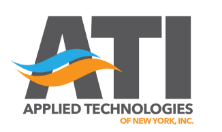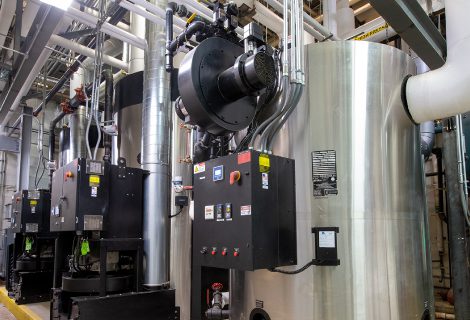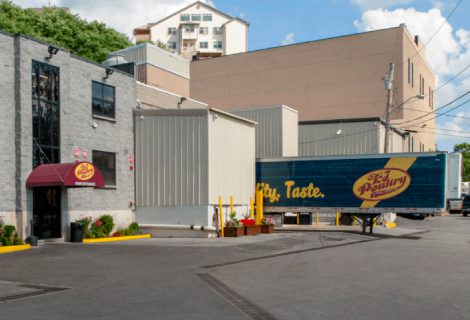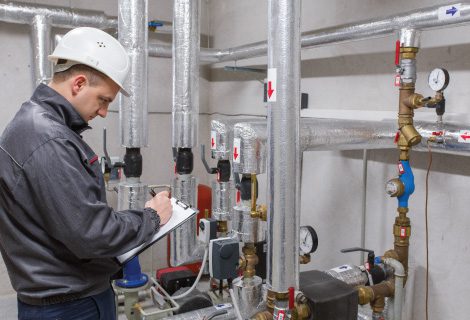Essential Boiler Room Safety Tips
Any industrial facility or workplace needs a functional, safe boiler room; and the only way to achieve this goal is with proper boiler room safety. Unfortunately, boiler room safety and maintenance often fails to make a bleep on the conscious radar of building operations. However, the experts at ATI of New York have streamlined boiler room safety into an easy-to-follow list of tips and a checklist you can use each day.
Training & Continuing Education Is a Necessity
Any industrial facility or workplace needs a functional, safe boiler room; and the only way to achieve this goal is with proper boiler room safety. Unfortunately, boiler room safety and maintenance often fails to make a bleep on the conscious radar of building operations. However, the experts at ATI of New York have streamlined boiler room safety into an easy-to-follow list of tips and a checklist you can use each day.
Unfortunately, not all steam boilers and hot water boilers are created equally. As a result, it’s critical everyone in the facility who has access to the boiler and the boiler room is trained on all equipment, safety devices, controls, and up-to-date operating procedures.
If changes are made to the boiler system, it’s equally important to teach those end users how to interact with any other additions or new controls. Knowledge is an essential component of proper boiler room and boiler maintenance, which is one of the reasons ATI of New York takes a hands-on approach to providing support and training to those in your facility.
Keeping Boiler Room Safety Clean & Simple
One of the most simple boiler room safety tips is to only use it to house the boiler — and that’s it. Under no circumstances should your boiler room be used as an all-purpose storage area. The burner on your boiler must have proper air circulation to prevent the production of CO and incomplete fuel combustion. As a result, it’s imperative to keep your boiler room clear of unnecessary items, clean, and only utilized for its sole purpose.
Schedule Regular Inspections & Maintenance
When it comes to your boiler — an ounce of maintenance is worth a pound of cure! Make sure your facility sticks to a maintenance schedule to prevent more serious problems and to help ensure boiler room safety. One simple tip is to create a maintenance schedule.
Use boiler operating sheets, manufacturer’s recommendations, and maintenance records to establish a schedule for preventative maintenance. This schedule can be based on:
- Operating conditions
- Repairs
- Past maintenance
- Previous repairs performed on the boiler
Reinspect Equipment When Necessary
Inspections are not a one-and-done process. Instead, it’s critical to schedule a reinspection after any new equipment installation or any extensive repairs. Make sure you have a qualified boiler inspector who examines the entire system.
Boiler Room Safety Should Include An Operations Log
It’s important to document everything that occurs within your boiler room, including:
- Activities employees perform while in the boiler room
- Manufacturer notes, and
- Maintenance records
The operations log will help you stay in front of potential problems. At the same time, an accurate operations log will simplify your ability to determine what and when something went awry, which can significantly expedite rectifying the problem.
Utilizing Automatic Combustion Safety Devices
Most fuel-fired boiler explosions can be sourced to shutdown or startup. However, automatic combustion safety equipment is engineered to significantly reduce the changes of an explosion and/or fire. These safety devices can also reduce any damage if an explosion or fire does occur.
Make sure you implement a documented program for testing, inspecting, and maintaining all combustion control equipment. It’s important all safety controls are tested at a minimum of once a year to ensure proper operation.
Use Boiler Room Safety Checklists
The value of a boiler room safety checklist cannot be understated. Don’t have time to create one? Simply use ATI of New York’s safety checklist for guidance and tips to keep your boiler room safe and properly maintained.
Boiler Room Checklist at the Beginning of Season
If you’re using your boiler for heating applications, make sure to pay special attention to the following at the start of the heating season:
Test the Fuel Safety Shutoff Valves (SSOV) for leakages.
Check wiring, piping, hoses, and electrical connections of all shutoff valves and interlocks for corrosion, leaks and loose connections.
Test damper low/high fire interlocks, pressure switches and air flow switches.
Every safety control that interlocks with the SSOV through the combustion safeguard controller and flame scanners should be inspected and tested.
Boiler Room Checklist at Startup
As we previously mentioned, a large number of explosions originate during shutdown and startup. Use the following boiler startup checklist to improve boiler room safety:
- Make sure to verify water level in boiler
- Inspect all manual and automatic controls regulating feed water, dampers draft, as well as interlocks
- Make sure every stack damper is open
- Inspect flame detection equipment
- Check flue passes and the furnace for fuel accumulation. Make sure all unburned fuel is thoroughly removed
- Make sure you fully clear gas passages by purging furnace for a minimum of three to five minutes
- Anytime your burner doesn’t ignite within five seconds, make sure you turn off the fuel supply and repurge the furnace
- Never leave your boiler on auto fired while unattended once you have started it — until it has successfully completed multiple firing cycles and you’ve verified that all controls are properly functioning
Monthly Boiler Room Checklist
In addition to the previously mentioned items, you can help improve boiler room safety by conducting the following monthly tests and checks:
- Inspect the air flow interlocks and fan
- Check the flame failure detection system
- Inspect the temperature interlock or high steam pressure
- Check the low fire start interlock
- Inspect temperature interlocks and fuel pressure
- Check drip leg and gas cleaner
- Test low and high fuel pressure interlocks
Contact Applied Technologies of New York
Looking for more boiler room safety tips and the experienced professionals who can help? Contact ATI of New York today.










